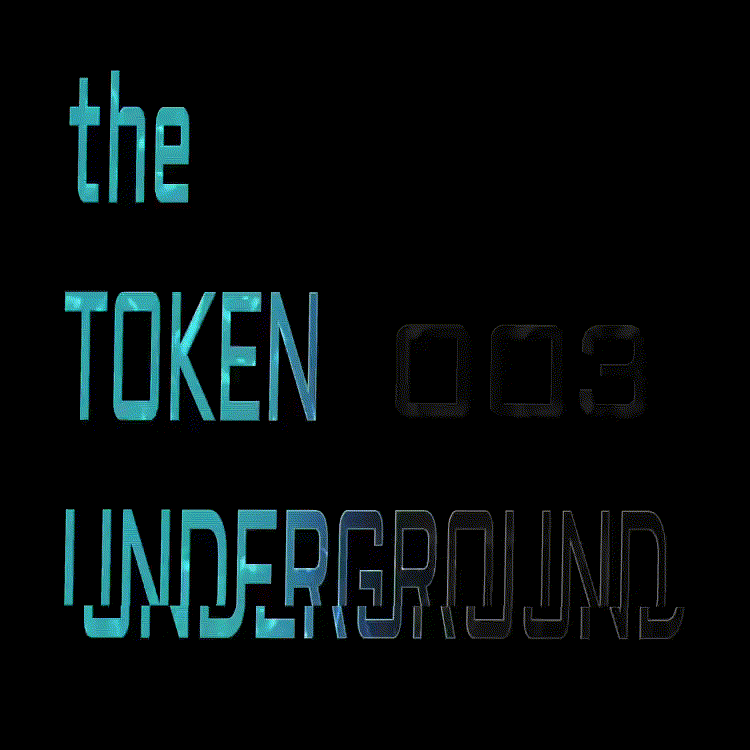The Slow Death of Crypto Anarchism
By Tobias J. Sperrin
Now five months in 2019, we’ve already seen some market gains with increased investor confidence and ongoing implementation of regulatory frameworks throughout the global blockchain sector. Securities platforms hope to rebuild the equity markets with little consideration for the legal restrictions of the current system, while ICOs and IEOs continue to market tokenized securities under the guise of a wholly separate class of digital assets. Even legitimate projects are naively optimistic about the adoption rate marketing their slow technological progress as normal. There are also numerous social media platforms and internet browsers under development allowing users to reward each other with digital assets for posted content and personal data. But even on the premise that such features are viable, they will be most likely eventually implemented by the likes of Facebook and Google.
But while the industry is being legitimised through regulation in a number of jurisdictions, these legal frameworks and the uncertain stance of other regulators are still limiting the amount of institutional involvement. The prosecution of dishonest actors in the unregulated market continues to be heavily publicised, so that the cryptocurrency and ICO markets have not yet been able to disassociate themselves from their anarchistic roots and criminal past.
Crypto Anarchy and the Birth of Bitcoin
The Bitcoin Whitepaper from Satoshi Nakamoto celebrated its tenth anniversary last year. The Bitcoin tech was originally intended to circumvent the mainstream financial system initiated when the global economy had been plunged into crisis by the poorly managed operations of the finance sector. So it really did appeal to the anti-establishment sentiment of those early enthusiasts. Anarchist groups have been regularly integrated with crypto industry events, and the ideology of crypto-anarchism of course pre-dates Bitcoin suggesting that completely anonymous, encrypted systems will be able to swiftly displace central banks and governments across the globe.
Hence, Timothy C. May published his Crypto Anarchist Manifesto as early as 1988, claiming that:
“Crypto anarchy will alter completely the nature of government regulation, the ability to tax and control economic interactions, the ability to keep information secret, and will even alter the nature of trust and reputation.”
While I do generally agree with this core belief of Bitcoin Anarchism, I have written this article because its application in the blockchain sector is often fundamentally flawed. Yes, encryption technology will drastically alter the nature of trust and the manner in which we live our lives. But similar to the above example, too many companies continuously underestimate the power of the established system. Google, Microsoft and mainstream financial firms such as J.P. Morgan and Deutsche Bank have already been investing heavily in blockchain research, both publicly and privately in some cases. Walmart was quick to develop their own blockchain based supply chain solution, while IBM and Bank of America are undergoing a rapid patent race to claim market control through intellectual property.
Blockchain technology was never going to replace these mainstream systems or the other central authorities often targeted by the cryptocurrency community. Instead, the capitalist machine of a modern economy will adapt and incorporate new technology, so long as it is profitable to do so. New companies and business models will appear, as occurs with the emergence of any disruptive technology.
But regardless of any origins or intentions for blockchain, it will ultimately benefit the machine it hoped to circumvent more than it will help any anarchists or startup underdogs.
Do startups need blockchain technology?
Large corporations will naturally benefit the most from blockchain applications, whether it is via smart contract software, decentralised governance, or a simple benefit of an immutable ledger for their commercial data. By delegating selected tasks to a distributed network, these companies can reduce their operational costs or other inefficiencies, both of which will have greater value because of the greater associated revenue of a large corporation.
Despite the greater benefits open to large commercial undertakings, their incentive is obviously entirely distinct from that of crypto-anarchism. As a result, the mainstream systematic approach to integrating DLT’s will look very different to the current blockchain space.
The Importance of Liability
By eliminating the reliance on trust and a centralised system, DLT also removes the safety net of liability, which is a foundation of modern business, law and governance on which the economy relies. If a bank transfers money to the wrong person by mistake, the bank is responsible for their actions and any necessary remuneration. But if money is transferred by a network of 1,000,000+ computing nodes, it is uncertain who will be held responsible and the law is unable to protect us.
The infrastructure in developed nations is therefore yet insufficient to accommodate or fully benefit from DLT development. The legislators, administrative systems and potentially the labour market will resist decentralisation of the most crucial economic sectors in order to protect their own function within a centralised economy. The system will also inherently act to protect the commercial giants of those sectors, the capital of which is often held by public investors or even the government itself.
A Balanced Degree of Decentralisation
It would be wrong to deny that global industry will undergo a revolutionary shift towards decentralisation over the next decade. Yet, while a key benefit of blockchain is the accountability that it can bring to commercial and economic systems, the use of permissionless networks results in there being no accountability for the parties that facilitate blockchain systems.
These completely open networks perform the overall function in a trustworthy manner as nodes are incentivised via the consensus mechanism, and collusion is more difficult in a larger network. But the complete removal of liability has been a pursuit of crypto-anarchists and the primitive market, driven by the optimistic circumvention of central authorities and industrial powers. Instead, it is fair to predict that a compromise will be met, between the benefits of disseminating trust through decentralisation and the security of using liable third parties. The obvious solution to achieving this compromise is the use of permissive networks i.e. where blockchain data is confirmed cryptographically by a controlled network of identified users.
Some projects may do this with Proof-of-Identity or Proof-of-Authority type consensus mechanisms. Others use more effective mechanisms based on Proof-of-Stake (PoS), where “masternodes” confirm transactions for a blockchain network in which they have placed a stake to keep them honest (e.g. running a DASH masternodes requires the deposit of 1,000 DASH into escrow). These networks confirm transactions at much higher speeds due to the lower number of nodes and less labour-intensive process.
So by using smaller, permissive networks, blockchain applications will offer higher performance and greater protection in the modern world. But more to the point, they retain the crucial concept of liability, while meeting a compromise to attain the benefits of decentralisation. By controlling the addition of new members to a blockchain network, corporations will be able to identify the culpable actors in the event of fraudulent collusion or a security breach. The process can include any number of factors that can be confirmed online and are designed to limit regulatory or monetary risk.
As the market develops and widespread adoption of the technology progresses, the traditional economy will be more focused on the increased efficiency and reduction of intermediary costs. This means greater use of public permissioned and consortium type blockchains, to produce higher performance systems which maintain the safety net of liability while being more compatible with modern business principles.


